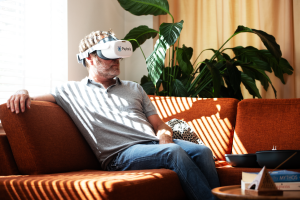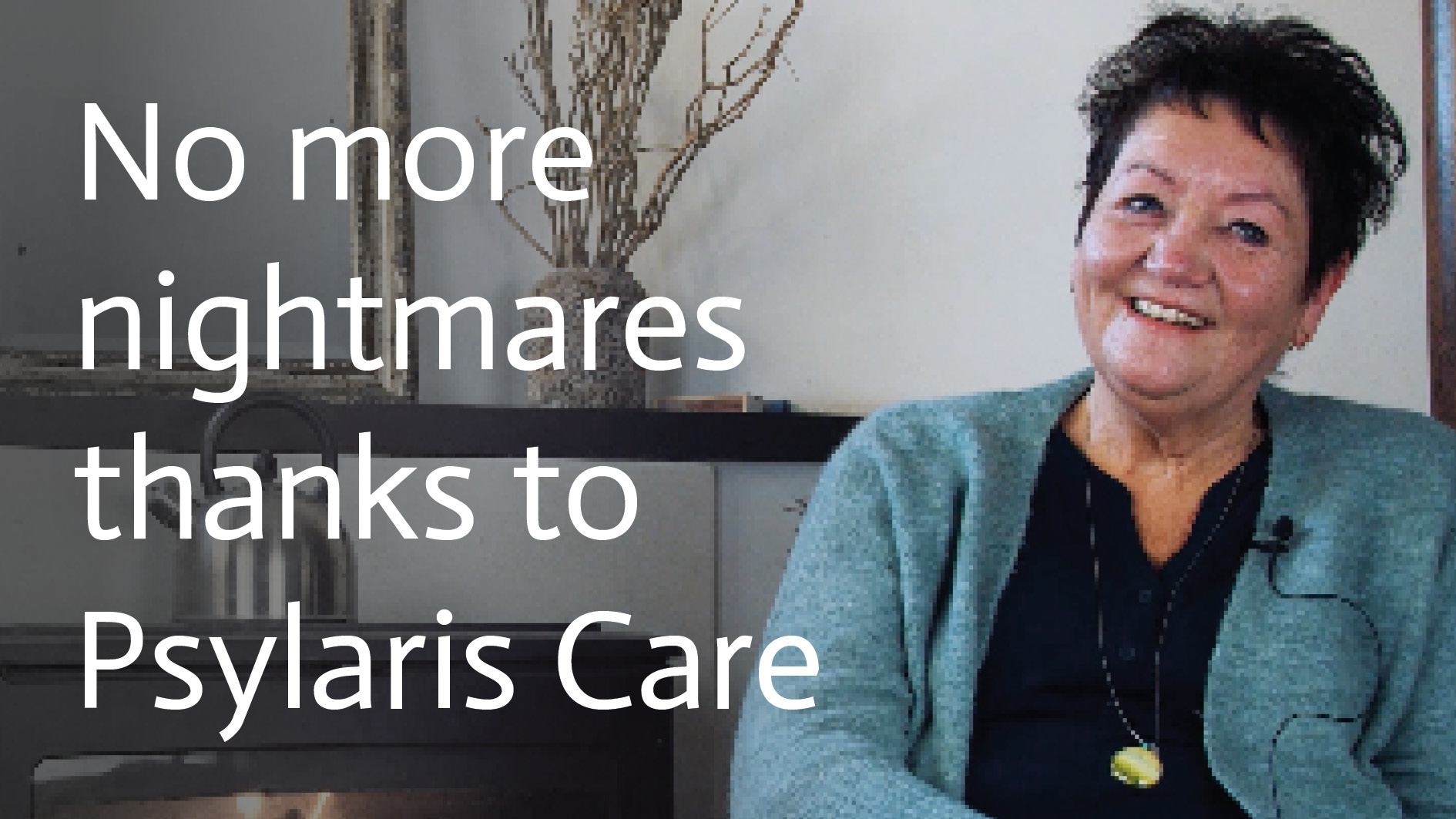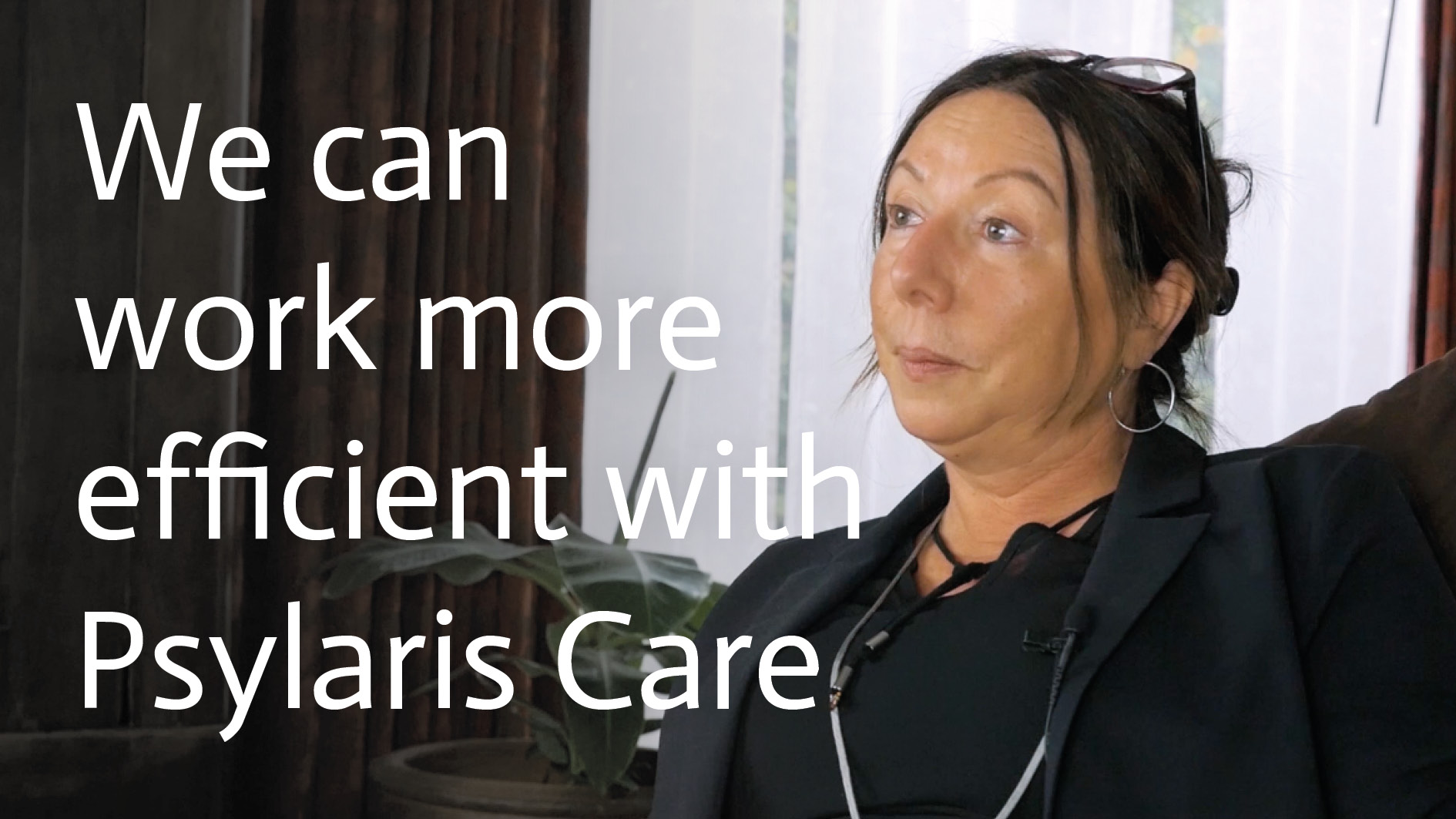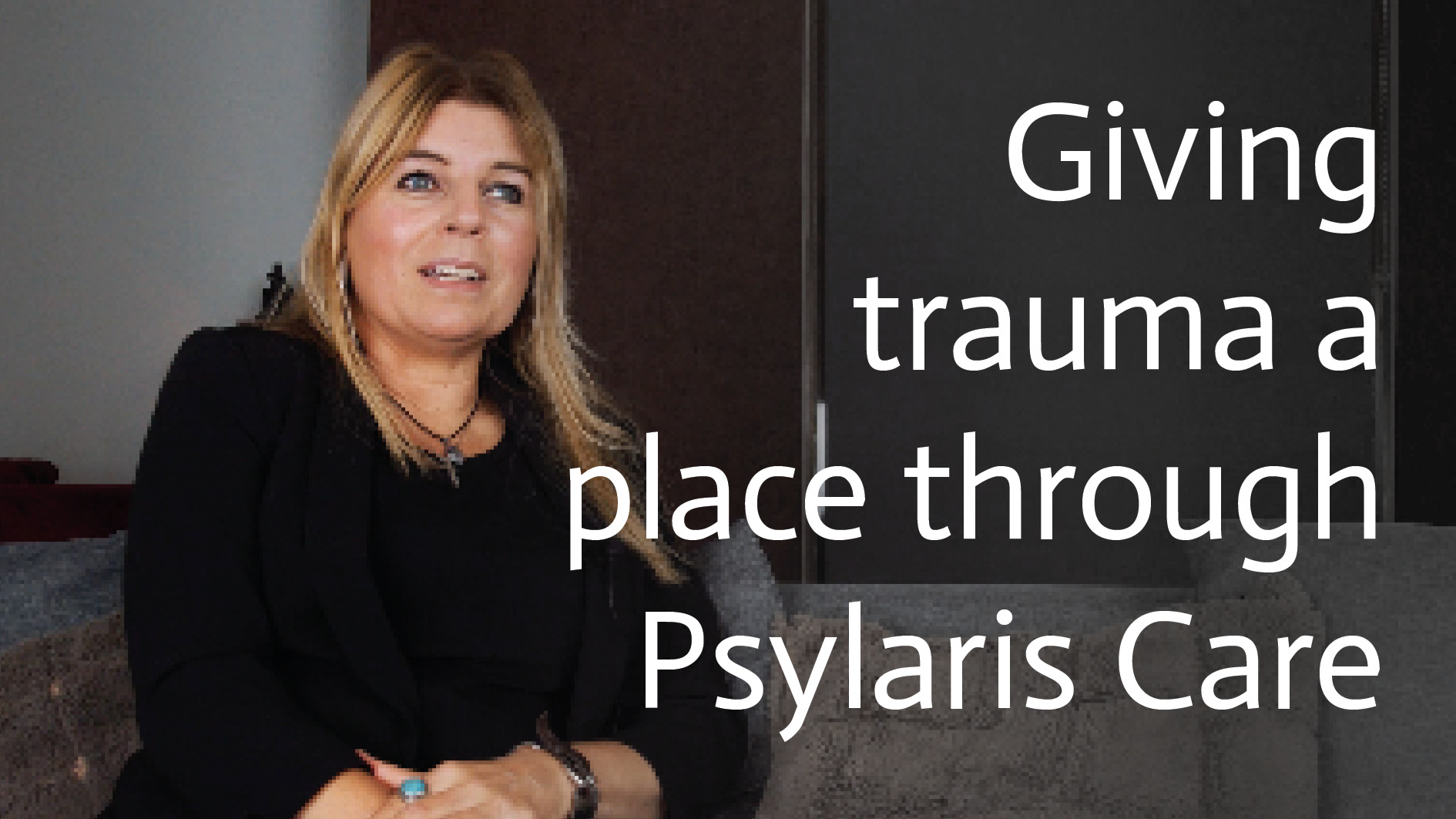Understanding Viewer Behavior in Virtual Reality Exposure Therapy (VRET)
Examining the Number of Replays for 360-degree Scenarios Across the Same Video and Category
At Psylaris, we are committed to developing and enhancing our virtual reality solutions for mental healthcare on a daily basis. We create VR applications, such as 360-degree exposure videos, designed to support therapists in effectively treating anxiety disorders and trauma.
Through research, we aim to understand how our end-users interact with this technology and how we can optimize our products to meet their needs. By gaining insights into viewing behavior within Virtual Reality Exposure Therapy (VRET), for instance, we strive to improve and personalize our content, ensuring that every therapy experience aligns more closely with the needs of patients and therapists.
The research: 360-degree videos
Virtual reality technology can provide alternative treatments to some individuals with mental health disorders. Virtual reality exposure therapy (VRET) in particular is becoming an increasingly popular tool for anxiety-related disorders. The traditional approach, in-vivo exposure, involves exposing individuals to anxiety-provoking triggers in real-world situations to help them overcome their anxiety. However, many individuals with social anxiety either discontinue treatment prematurely or avoid starting it altogether, often due to the immediate high intensity of this kind of exposure therapy which might be too frightening (Garcia-Palacios et al., 2007). The same study showed VRET to be the preferred treatment option, where Bouchard and colleagues (2017) found VRET to also be more practical, meaning it could be a potential solution for the so-called treatment avoidance.
Other advantages of in-virtuo exposure include the possibility to vary the context of immersion, without having to go outside or needing participants for social exposure to reproduce specific situations that might not happen frequently in daily life. The immersive 360-degree videos in VR from Psylaris (Figure 1) enable individuals to be exposed to a variety of scenarios in a controlled yet realistic environment.

While 360-degree videos are shown to be highly effective (Ionescu et al., 2021), less is known about what kind of scenarios users would select in a non-study context, especially when VR allows them to transition between different types of anxiety-provoking situations. Understanding these viewing patterns can help therapists and developers optimise VR content for exposure therapy.
Therefore, in this blog post, we will explore whether users tend to rewatch the same video, watch different videos from the same category, or videos from different categories. The term ‘same category’ refers to overlapping labels such as 'Divorce', 'Animals', 'Social', ‘Medical’, 'Transport', and so on.
Number of Replays Across the Same Video
The fact that many users (91,8%; see Figure 2) only watch a video once may suggest they feel the exposure is sufficient after a single viewing and that the video effectively addresses their anxiety in one session. However, research suggests that repeated exposure is crucial for long-term benefits (habituation models; Groves & Thompson, 1970), so the lack of replays could also indicate the need for either different or more challenging content.
For this reason, it is important to analyse whether users watch different videos from the same category, which will be explored in the following paragraph.
Additionally, a follow-up consideration would be to gather data across multiple sessions, as it has not yet been explored whether users might watch the same video in subsequent sessions, how many videos individuals watch within a session, and the duration of sessions.
It would also be interesting to look into whether the anxiety is alleviated after the session and gather qualitative data regarding whether the video library was extensive enough for the patient’s and therapist’s needs.
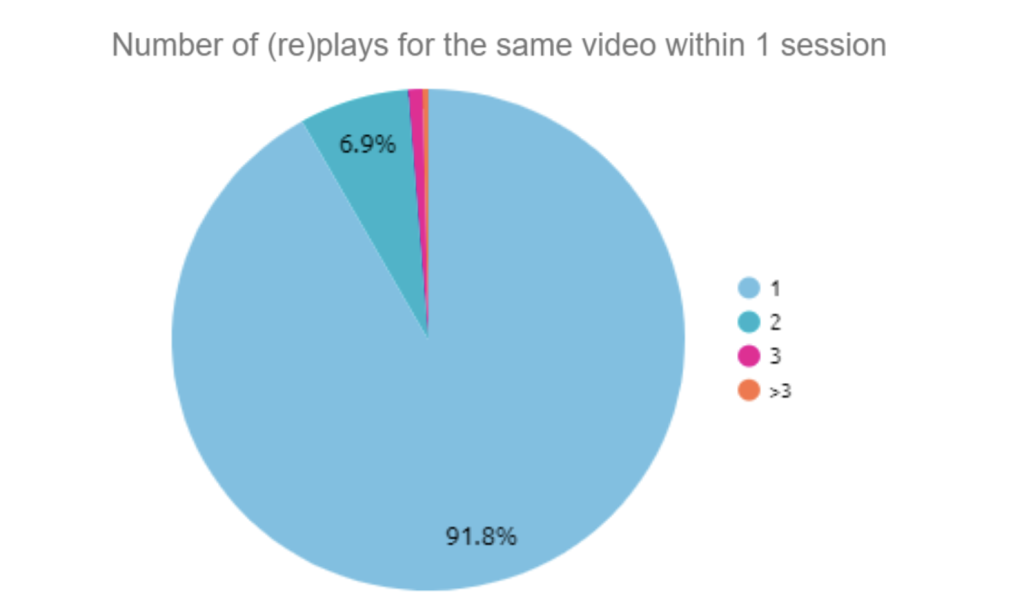
Exploring within Different Categories
Our analysis has found that users tend to explore different videos, rather than repeatedly watching a single video. This doesn’t suggest that rewatching isn’t beneficial, but it highlights a preference for variety. This is in line with a study from Appel and colleagues (2020), where participants made suggestions for including more diverse and less repetitive content.
Interestingly, only about 40,9% (see Figure 3) of users choose to engage with videos exclusively from the same exposure category within a single session. Some individuals may prefer focusing on one anxiety trigger at a time (e.g., social situations) without feeling the need to focus on unrelated categories like fear of spiders. For those who do explore multiple categories in a single session, it could suggest that these individuals may feel comfortable enough to engage with a wider range of anxieties, possibly accelerating their therapeutic journey by tackling multiple fears in one session.
In real life, it may not be feasible to confront multiple fears (such as fear of flying and fear of crowds) in the same day or session. VR therapy can switch between different scenarios, allowing individuals to work through a variety of anxieties in a single therapy session.

Important considerations
For the current analysis, a representative subset of the data collected by Psylaris (over 3500 sessions) is used. The data collected for this study is unbiased by the use of 360-degree relaxation videos before and/or after exposure, as these have been excluded from this analysis.
However, it is possible that therapists did not start a new session for their subsequent client, which would result in this being logged as part of the same session. This could potentially impact both the number of once-watched videos in a session and the number of individuals who engaged in multiple categories across a single session.
Interpretation of findings
These viewing behaviours offer valuable insights into how users are interacting with VR exposure therapy. The observed patterns highlight the importance of personalised therapy. Not every individual responds to exposure therapy in the same way, and a one-size-fits-all approach might not be optimal.
For some, focusing on a single category might be enough, while others may benefit from a broader exploration of multiple categories in a single session. Tailoring the VR experience to the needs of each individual—whether through the intensity of exposure or the variety of content—could lead to better outcomes. Understanding and balancing the intensity of exposure experiences is key to keeping participants engaged while preventing them from feeling overwhelmed.
What are your thoughts on and/or experiences with viewer behaviour during VRET sessions?
Author: Caroline is a researcher at Psylaris, holding a Master's degree in Neurobiology from the University of Amsterdam. She has experience in clinical research, specialising in various brain imaging techniques, and is skilled in both the acquisition and analysis of neural data. At Psylaris, she is responsible for setting up new research projects in collaboration with mental health institutions and universities to examine the efficacy, efficiency, and implementation of VR in mental healthcare.
Data-analyst: Léa is a junior data engineer at Psylaris, holding a Bachelor’s degree in Data Science and AI from Maastricht University. She works on VR and therapy technology, by analysing users data to create solutions that are personalised and impactful. Her other interests include environmental science and working with GIS data.
References
- Appel, L., Appel, E., Bogler, O., Wiseman, M., Cohen, L., Ein, N., Abrams, H. B., & Campos, J. L. (2020). Older adults with cognitive and/or physical impairments can benefit from immersive virtual reality experiences: A feasibility study. Frontiers in Medicine, 6(January). https://doi.org/10.3389/fmed.2019.00329
- Bouchard, S., Dumoulin, S., Robillard, G., Guitard, T., Klinger, E., Forget, H., … & Roucaut, F. X. (2017). Virtual reality compared with in vivo exposure in the treatment of social anxiety disorder: a three-arm randomised controlled trial. The British Journal of Psychiatry, 210(4), 276-283.
- Garcia-Palacios, A., Botella, C., Hoffman, H., & Fabregat, S. (2007). Comparing acceptance and refusal rates of virtual reality exposure vs. in vivo exposure by patients with specific phobias. Cyberpsychology & behavior, 10(5), 722-724.
- Ionescu, A., Van Daele, T., Rizzo, A., Blair, C., & Best, P. (2021). 360 videos for immersive mental health interventions: a systematic review. Journal of Technology in Behavioral Science, 6(4), 631-651.


